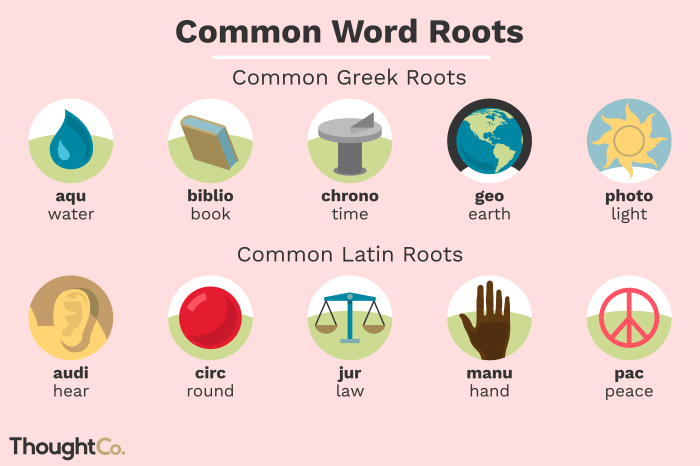The root word dorm means – As the root word “dorm” takes center stage, this article delves into its Latin origins and explores its diverse meanings, types, and cultural significance in student housing. Prepare to be enlightened as we uncover the fascinating world of dormitories.
Dormitories, commonly known as dorms, have become an integral part of the university experience, shaping the lives of countless students. From traditional shared rooms to modern apartment-style suites, dorms offer a unique blend of social interaction, academic support, and personal growth.
Etymology of Dorm

The word “dorm” has its roots in the Latin word “dormire,” meaning “to sleep.” This root has given rise to numerous words related to sleep and rest in English and other languages.
Examples of Words Derived from the Root “Dorm”
- Dormitory: A building or room where people sleep, especially students or members of a religious community.
- Dormant: In a state of inactivity or suspended animation.
- Dormancy: A period of inactivity or suspended animation.
- Somnolent: Drowsy or sleepy.
- Insomnia: Difficulty falling or staying asleep.
Meanings of Dorm

In the context of housing, a “dorm” primarily refers to a residential building that provides accommodations for students attending a college or university. These buildings typically offer shared living spaces, such as bedrooms, bathrooms, and common areas, and may also include amenities like dining halls, laundry facilities, and study rooms.
Beyond its primary meaning, “dorm” has also acquired alternative or slang meanings. For instance, in some contexts, it can refer to a temporary or makeshift sleeping arrangement, such as a couch or sleeping bag, especially when used in a humorous or informal setting.
Alternative Meanings of Dorm
Some alternative meanings of “dorm” include:
- A dormitory, or residence hall, for students at a college or university.
- A temporary or makeshift sleeping arrangement, such as a couch or sleeping bag.
- A state of dormancy or inactivity, such as hibernation.
Types of Dorms
Dorms come in a variety of shapes and sizes, each with its own unique set of features and amenities. Some of the most common types of dorms include:
Traditional Dorms
Traditional dorms are the most basic type of dorm room. They typically consist of two or more beds, desks, and a dresser or wardrobe. Traditional dorms often share a bathroom with other dorm rooms.
Suite-Style Dorms
Suite-style dorms offer more privacy than traditional dorms. They typically consist of two or more bedrooms, each with its own bathroom. Suite-style dorms also often have a shared living room or kitchen.
Apartment-Style Dorms
Apartment-style dorms are the most private type of dorm room. They typically consist of a bedroom, bathroom, and kitchen. Apartment-style dorms are often more expensive than traditional or suite-style dorms.
Dorm Culture

Dorm life offers a unique social and cultural experience that shapes the lives of many college students. It fosters a sense of community and belonging, providing opportunities for personal growth and lifelong friendships.Dorm culture is characterized by a vibrant social scene that includes various traditions, events, and activities.
These activities aim to create a welcoming and inclusive environment for residents, promoting social connections and a sense of unity.
Dorm Traditions
Dorms often develop unique traditions that become part of their identity. These traditions may include:
- Dorm-wide events such as potlucks, movie nights, and game tournaments.
- Special rituals or ceremonies to welcome new residents or mark significant milestones.
- Dorm-specific songs, chants, or cheers that create a sense of camaraderie.
Dorm Events
Dorms typically host a variety of events throughout the year to foster social interaction and a sense of community. These events may include:
- Social mixers and ice breakers to help residents get to know each other.
- Educational or cultural programs such as guest speakers, workshops, or movie screenings.
- Community service projects that allow residents to give back to the surrounding community.
Dorm Activities
Dorms also provide various activities for residents to enjoy, such as:
- Common areas for studying, socializing, or relaxing.
- Recreational facilities such as fitness centers, game rooms, or outdoor spaces.
- Student clubs or organizations that cater to specific interests or hobbies.
These social and cultural aspects of dorm life contribute to a sense of belonging and support among residents, creating a memorable and transformative experience for many college students.
Dorm Design
Dormitories, often known as dorms, are residential facilities that house students attending educational institutions. Their architectural and interior design are influenced by various principles, including functionality, comfort, and fostering a sense of community.
Dorm design emphasizes creating living spaces that are both practical and conducive to academic success. Architects and designers consider factors such as natural light, ventilation, storage, and study areas to ensure a comfortable and productive environment for students.
The root word “dorm” means “to sleep”. For a comprehensive list of words related to sleeping, check out the edmark word list level 1 . This resource provides a wide range of vocabulary on the topic of sleep, including verbs, nouns, and adjectives.
The root word “dorm” remains a fundamental part of many words related to the concept of sleep, highlighting its importance in our understanding of this essential human activity.
Sustainable Dorm Designs
In recent years, there has been a growing focus on sustainability in dorm design. Architects are exploring innovative ways to reduce the environmental impact of dorms while enhancing their livability.
- Green building materials:Dorms are increasingly constructed using eco-friendly materials such as recycled steel, bamboo, and low-VOC (volatile organic compound) paints.
- Energy efficiency:Designers incorporate energy-efficient appliances, lighting systems, and insulation to minimize energy consumption.
- Water conservation:Water-saving fixtures, rainwater harvesting systems, and drought-tolerant landscaping help reduce water usage.
Dorm Amenities
Dormitories often provide various amenities to enhance the well-being and convenience of students. These amenities range from basic necessities to recreational facilities, creating a supportive and comfortable living environment.
The availability of these amenities varies depending on the institution and dorm type, but common features include:
Laundry Facilities
- Coin-operated or card-operated washing machines and dryers.
- Convenient for students to keep their clothes clean and fresh.
Study Spaces, The root word dorm means
- Quiet and well-lit common areas or study rooms.
- Provide a dedicated space for students to focus on their studies.
Social Spaces
- Common lounges or game rooms.
- Facilitate social interactions and foster a sense of community.
Fitness Facilities
- On-site gyms or fitness centers.
- Promote physical health and well-being.
Dining Options
- Cafeterias or meal plans.
- Provide convenient and affordable dining options for students.
Security Features
- Secure entrances, keycard access, and surveillance systems.
- Ensure the safety and security of students and their belongings.
Dorm Regulations: The Root Word Dorm Means

Dorm regulations are a set of rules and guidelines that are enforced in dormitories to ensure a safe, comfortable, and respectful living environment for all residents. These regulations cover a wide range of topics, including noise levels, guest policies, and safety procedures.
The rationale behind dorm regulations is to create a balanced and harmonious living environment where students can feel comfortable, respected, and safe. By establishing clear rules and expectations, dorm regulations help to prevent conflicts, maintain order, and foster a sense of community among residents.
Noise Levels
Noise levels are a common concern in dorms, as students often share close quarters with multiple roommates. Dorm regulations typically set specific quiet hours during which noise levels must be kept to a minimum. This is to ensure that students can get enough sleep and focus on their studies without distractions.
Guest Policies
Dorm regulations also address guest policies, which specify who is allowed to visit residents and for how long. These policies are in place to maintain the safety and security of the dorm and to prevent overcrowding. Guests may be required to sign in at the front desk and may have limited access to certain areas of the dorm.
Safety Procedures
Dorm regulations include safety procedures that are designed to protect residents in the event of an emergency. These procedures may include fire drills, evacuation plans, and instructions on how to report suspicious activity. By following these procedures, residents can help to ensure their own safety and the safety of others.
Dorm Safety
Ensuring safety and security in dorms is crucial for students’ well-being and peace of mind. Implementing these tips and guidelines can create a secure and comfortable living environment:
- Keep valuables secure by locking them in a safe or using a lockbox.
- Be aware of your surroundings and report any suspicious activity to dorm staff or campus security.
- Familiarize yourself with emergency exits and evacuation routes.
- Keep doors and windows locked when not in use.
- Avoid opening doors for strangers or allowing them into your room.
- Trust your instincts and report any concerns or uncomfortable situations to dorm staff.
Emergency Protocols
In case of an emergency, follow these protocols:
- Stay calm and assess the situation.
- Call 911 or the campus emergency number immediately.
- Follow instructions from dorm staff or emergency responders.
- Evacuate the building promptly if directed to do so.
- Meet at designated assembly points for further instructions.
Role of Dorm Staff
Dorm staff plays a vital role in maintaining a safe environment:
- Providing security and surveillance
- Enforcing dorm regulations and policies
- Responding to emergencies and incidents
- Offering support and assistance to students
- Fostering a sense of community and responsibility among residents
By following these guidelines and working together with dorm staff, students can create a safe and secure living space in their dorm.
Dorm Alternatives
Living in a dorm is a popular choice for college students, but it’s not the only option. There are a number of other housing options available, each with its own advantages and disadvantages.
Some of the most common dorm alternatives include:
Off-Campus Apartments
Off-campus apartments offer students more independence and privacy than dorms. They also tend to be more spacious and offer more amenities, such as kitchens and living rooms. However, off-campus apartments can be more expensive than dorms, and students may have to pay for utilities and other expenses.
Greek Houses
Greek houses are a popular housing option for students who want to be involved in a social community. Greek houses offer students a chance to live with other students who share their interests and values. However, Greek houses can be expensive, and students may have to participate in mandatory activities.
Co-ops
Co-ops are student-run housing communities that offer students a chance to live and work together. Co-ops are typically less expensive than other housing options, but students may have to share responsibilities such as cooking, cleaning, and maintenance.
Future of Dorms
The future of dorms holds exciting possibilities as emerging trends and innovations transform the way students live on campus. From cutting-edge designs to smart management systems, dorms are evolving to meet the changing needs of students.
One notable trend is the focus on sustainability and eco-friendliness. Dorms are being constructed using environmentally conscious materials and incorporating energy-efficient appliances to reduce their carbon footprint.
Smart Technology
Smart technology is revolutionizing dorm management. Automated systems control lighting, heating, and cooling, optimizing energy usage and creating a more comfortable living environment. Additionally, mobile apps allow students to access room information, request maintenance, and connect with other residents.
Personalized Spaces
The future of dorms emphasizes personalization. Students have greater flexibility in customizing their rooms with furniture, decor, and even smart home devices. This allows them to create a living space that reflects their individual style and preferences.
Community-Building Features
Recognizing the importance of community, future dorms prioritize features that foster social interaction. Common areas are designed to encourage collaboration, while amenities like shared kitchens and study lounges provide opportunities for students to connect and build relationships.
Wellness-Focused Design
Student well-being is a growing concern. Dorms are incorporating elements that promote physical and mental health. Natural light, green spaces, and fitness facilities are becoming essential features to create a supportive and healthy living environment.
Adaptability and Flexibility
As the needs of students evolve, future dorms are designed to be adaptable and flexible. Modular furniture and reconfigurable spaces allow for easy customization to accommodate different living arrangements and preferences.
Potential Evolution
In the coming years, dorms may continue to evolve into more than just living spaces. They could become hubs for innovation, collaboration, and experiential learning. Partnerships with universities and businesses could create opportunities for students to engage in research, entrepreneurship, and community outreach.
FAQ
What is the etymology of the word “dorm”?
The word “dorm” originates from the Latin word “dormire,” which means “to sleep.” It is related to other words such as “dormitory” and “dormant.”
What are the different types of dorms?
There are various types of dorms, including traditional shared rooms, suite-style dorms with private bedrooms and shared common areas, and apartment-style dorms with private kitchens and bathrooms.
What is dorm culture like?
Dorm culture is often characterized by a sense of community and belonging. Students living in dorms often participate in social events, study groups, and other activities together.